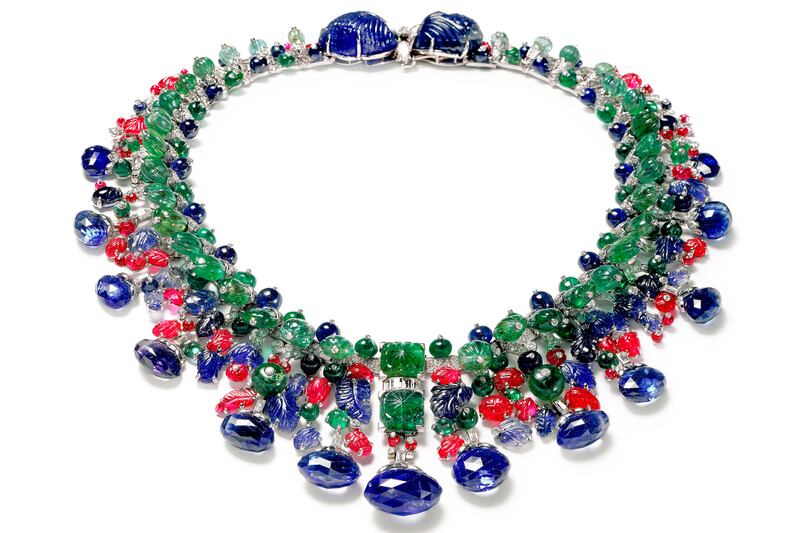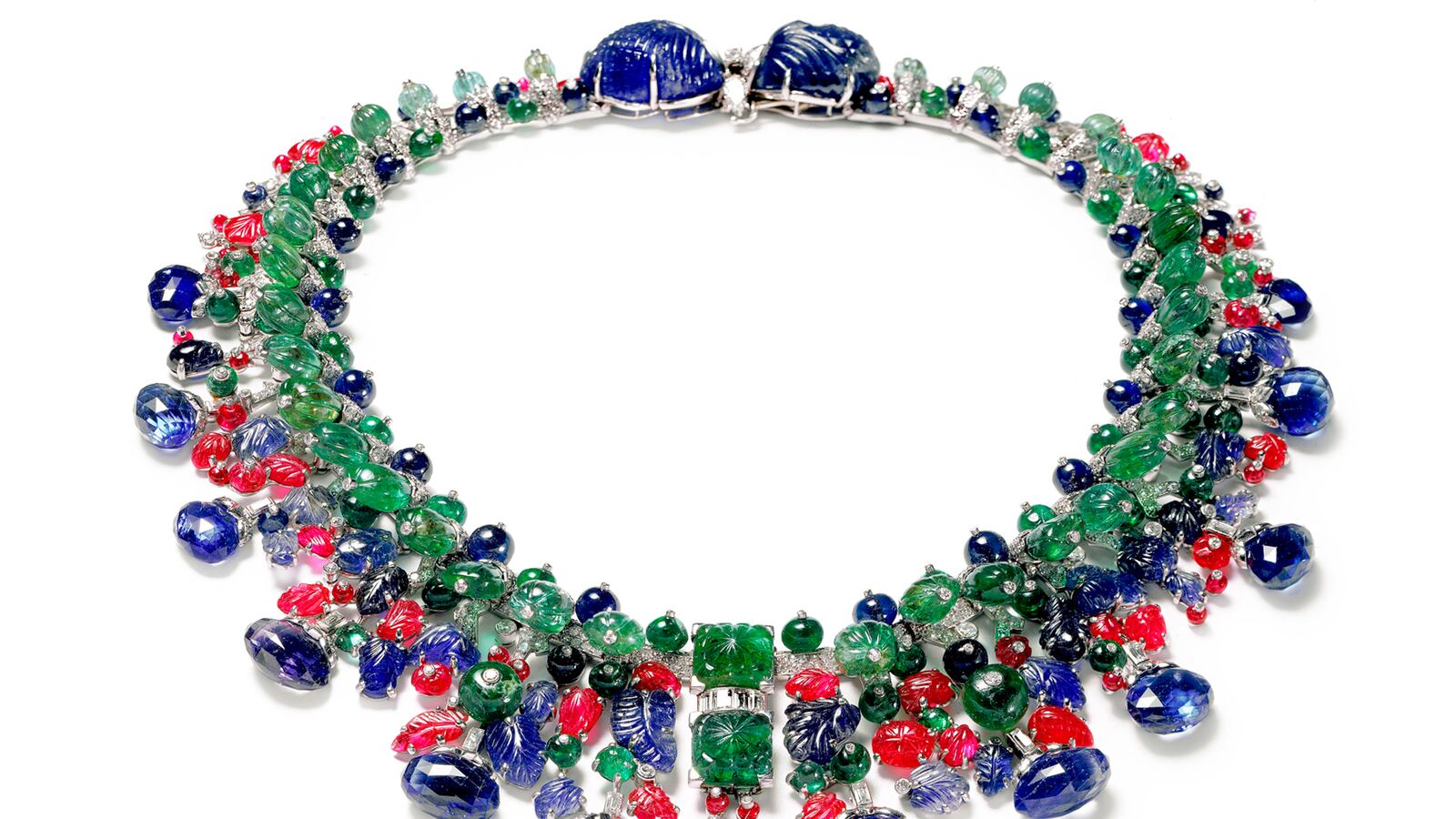
On a summer day at a villa on the French Riviera in 1957, top Hollywood producer Mike Todd gave his ravishing 25-year-old bride Elizabeth Taylor some buffed red-leather boxes. Her eyes brightened—she knew those boxes came from the French jeweler Cartier, one of her favorite stores in the world. She opened them and discovered a jaw-dropping ruby and diamond necklace, with matching earrings and bracelet glittering in the hot Mediterranean sunlight. “It was like the sun, lit up and made of red fire,” Taylor would remember. She swooned and cooed as she put them on and jumped into the pool, the drop earrings swinging like chandeliers in a storm. Ever the movie star, Taylor had someone on hand to film it.
The necklace, earrings, and film clip are among the marquee items on display at Cartier: Style and History, an unprecedented retrospective of the jewelry house’s work from its first year in 1847 through the 1970s that is being held at the Grand Palais in Paris. In the recently restored Salle d’Honneur, more than 600 items are on display, including the Halo Scroll tiara, a swirling diamond-filigree headdress that once belonged to Queen Elizabeth the Queen Mother and is currently owned by Queen Elizabeth II, who lent the tiara to Kate Middleton for her marriage to Prince William in 2011. Also on display is the 10.5-carat emerald-cut diamond engagement ring that Prince Rainier III of Monaco gave to American actress Grace Kelly in 1956.But there are a great many other gems on view, such as the sword crafted with a Picasso-head-like hilt for writer and filmmaker Jean Cocteau when he was admitted into the Academie Française, France’s regulatory body for language, in 1955; enameled, jewel-encrusted objets, such as clocks, cigarette cases, and desk accoutrements; a case devoted to a hundred-year’s-worth of Cartier watches; and a revolving display of international tiaras, including a Roman laurel wreath-like diadem once belonging to Princess Marie Bonaparte, the great-grandniece of Emperor Napoleon I of France and a psychoanalyst associated with Sigmund Freud.
For context, the curators Laurent Salomé and Laure Dalon have staged the jewelry alongside ephemeral gowns, period wallpaper, news clips of Cartier-bejeweled movie stars and portraits of socialite heiresses who were among the company’s most important clientele. Notebooks of preparatory pen and ink sketches and plaster molds from the early atelier illustrate the craftsmanship process of translating metals and bijoux into sparkling adornments. Particularly beautiful and unexpected are the collection of coral, onyx, and lapis lazuli scarabs, falcons, and other Egyptian bestiary from the 1920s, when Egyptomania swept across the world following the discovery of King Tutankhamen’s tomb in 1922. All is displayed in the cathedral-like hall in an ethereal darkness illuminated by kaleidoscopic projections of jewels on the wall that look like swirling stained glass windows.
Cartier was founded in 1847 when a young French jewelry apprentice named Louis-François Cartier bought his master’s atelier in Paris. He quickly made a name for himself among the French aristocracy; among his patrons was Empress Eugénie, wife of Napoleon III. He passed the business to his son Alfred, whose two sons Pierre and Jacques modernized and expanded the company internationally. The Cartier family sold it in 1964. Today it is owned by Richemont, the Swiss-based luxury group run by South African entrepreneur Johann Rupert, and does an estimated $5 billion in annual sales, according to analysts.
Though celebrity jewels are the show’s big draw, the exhibit’s most remarkable specimen is a multi-strand ceremonial bib necklace that Cartier created for Sir Bhupindra Singh, the Maharaja of Patiala. In 1925, Singh traveled with his court and coffers of gemstones from his palace in India to Cartier’s headquarters on the rue de la Paix in Paris to modernize his traditional Indian jewels in the Western fashion. The diamondiferous, rubied result, the curators say, “is Indian in extravagance and royal symbolism but more modern and Western due to its use of platinum instead of gold and its relative absence of color.” It is bling before bling existed, and proves that, while Cartier may be more than 150 years old, it has never lost its modern touch.






